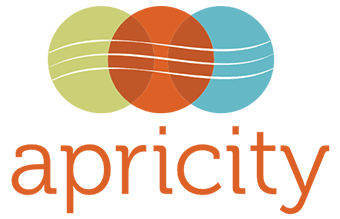Alcohol Addiction
Alcohol addiction also known as alcoholism or alcohol use disorder (AUD), is a chronic and progressive condition characterized by an inability to control or stop drinking despite negative consequences. It involves physical and psychological dependence on alcohol. Key features of alcohol addiction include loss of control, craving, tolerance, physical dependence, neglect of responsibilities, and continued use despite consequences. The condition is influenced by genetic, environmental, and psychological factors and can affect people of any age or socioeconomic status.
Opiate Addiction
Opiates are drugs with potent pain-relieving properties, including natural opiates and opioids. Natural opiates include morphine and codeine. Opioids, a broader category, encompass synthetic opioids (e.g., fentanyl) and semi-synthetic opioids (e.g., oxycodone, hydrocodone, heroin). While effective for pain management, opiates and opioids carry risks of dependence, addiction, and overdose. Signs of opiate addiction include cravings, withdrawal symptoms (including anxiety, nausea, sweating, and shaking), neglecting responsibilities, mood swings, secretive behavior, and declining physical health.
Cocaine Addiction
Cocaine is a powerful stimulant drug derived from the leaves of the coca plant. It induces intense euphoria, increased energy, and alertness by affecting the brain's neurotransmitters. However, its highly addictive nature and harmful health effects, including cardiovascular risks, make it a controlled substance with serious legal and health implications. Signs and symptoms of cocaine addiction include intense cravings, frequent use despite negative consequences, escalating doses, neglect of responsibilities, financial issues, mood swings, anxiety, paranoia, insomnia, weight loss, and social isolation. Physical signs may include dilated pupils, rapid heartbeat, and nosebleeds. Seeking professional help is crucial for recovery.
Methamphetamine Addiction
Methamphetamine, also known as "meth" or "crystal meth," is a potent stimulant affecting the central nervous system. Abusing methamphetamine can lead to severe health consequences, including addiction, cognitive impairment, and physical deterioration. Signs of methamphetamine addiction include increased tolerance, intense cravings, neglecting responsibilities, continued use despite negative consequences, withdrawal symptoms, behavioral changes, and prioritizing methamphetamine over obligations. Physical signs of meth addiction may include rapid weight loss, skin sores or lesions, dental problems ("meth mouth"), dilated pupils, excessive sweating, twitching, rapid eye movements, and a gaunt, unhealthy appearance.
Benzodiazepines Addictions
Benzodiazepines (benzos) are psychoactive drugs prescribed for anxiety, insomnia, and certain medical conditions. Despite their effectiveness, benzos carry a risk of addiction and dependence, with prolonged use leading to tolerance and withdrawal symptoms. Common benzodiazepines include alprazolam (Xanax), lorazepam (Ativan), diazepam (Valium), clonazepam (Klonopin), temazepam (Restoril), chlordiazepoxide (Librium), oxazepam (Serax), clorazepate (Tranxene), and midazolam (Versed). Careful prescribing and monitoring are essential due to their potential for abuse. Signs of benzodiazepine addiction include increased tolerance, cravings, neglecting responsibilities, continued use despite consequences, withdrawal symptoms, behavioral changes, cognitive decline, and prioritizing benzodiazepines over obligations.
Marijuana Addictions
Marijuana, also known as cannabis, contains compounds known as cannabinoids. Delta-9-tetrahydrocannabinol (THC) and cannabidiol (CBD) are the most well-known and studied. THC is the primary psychoactive component responsible for the "high" or euphoric effects that people experience when consuming marijuana. CBD does not produce the same intoxicating effects. Marijuana can be consumed in various forms, including smoking the dried flowers (buds) of the plant, vaporizing, or consuming edibles, tinctures, and oils. Marijuana addiction, or cannabis use disorder, presents with increased tolerance, cravings, neglect of responsibilities, persistent use despite negative consequences, loss of interest in activities, and withdrawal symptoms like irritability or insomnia. Behavioral changes, cognitive decline, and prioritizing marijuana over social or work obligations may signal addiction.
It's essential to seek professional help to address and manage potential addiction issues.


